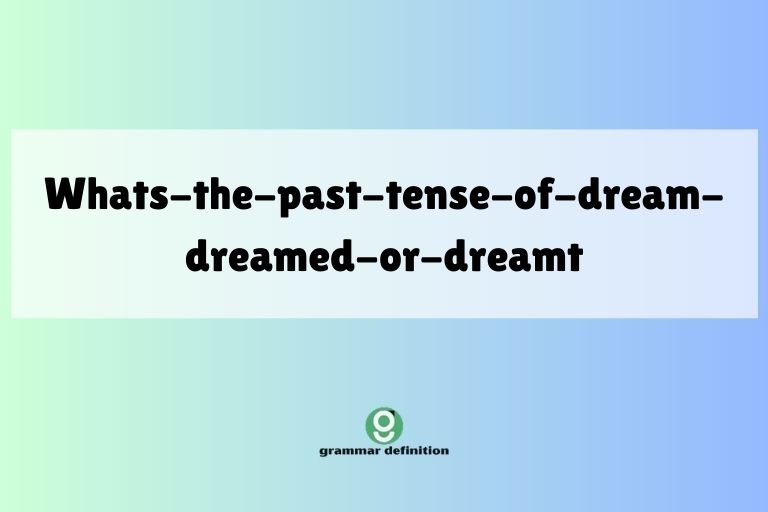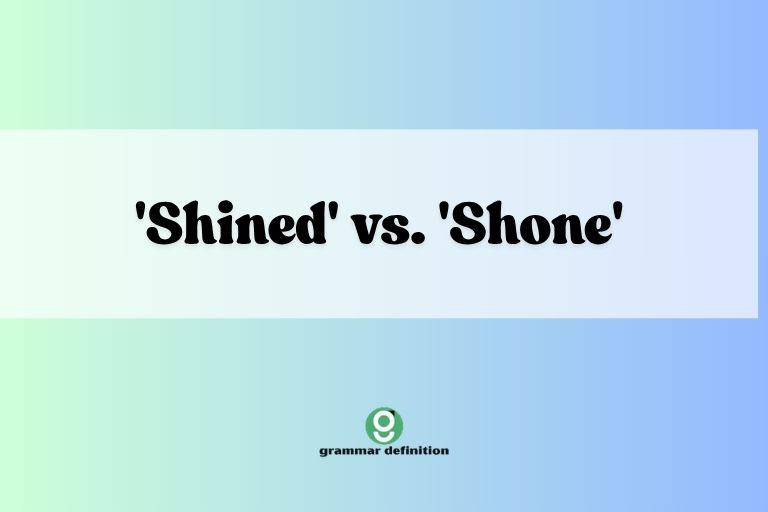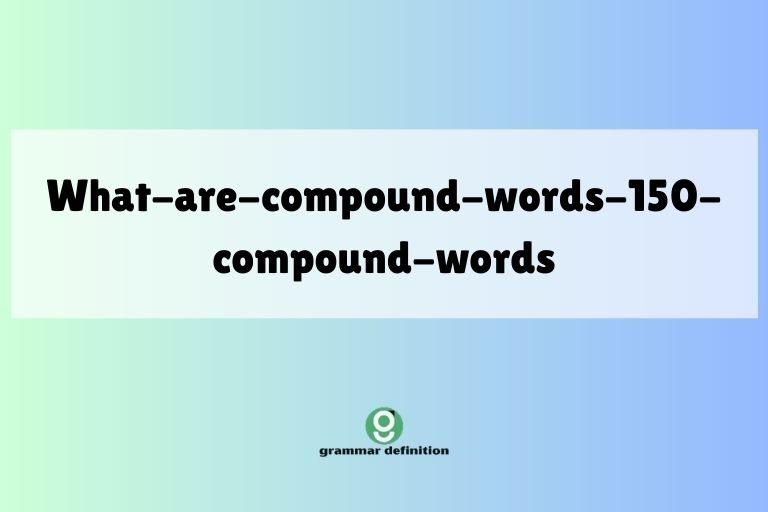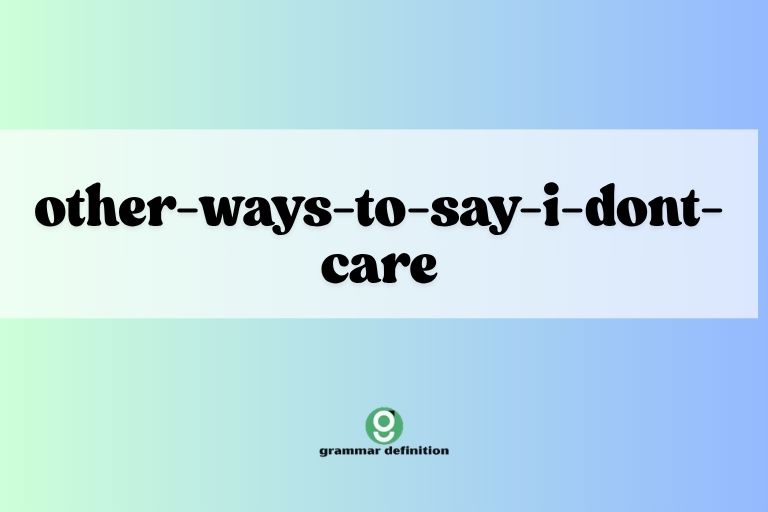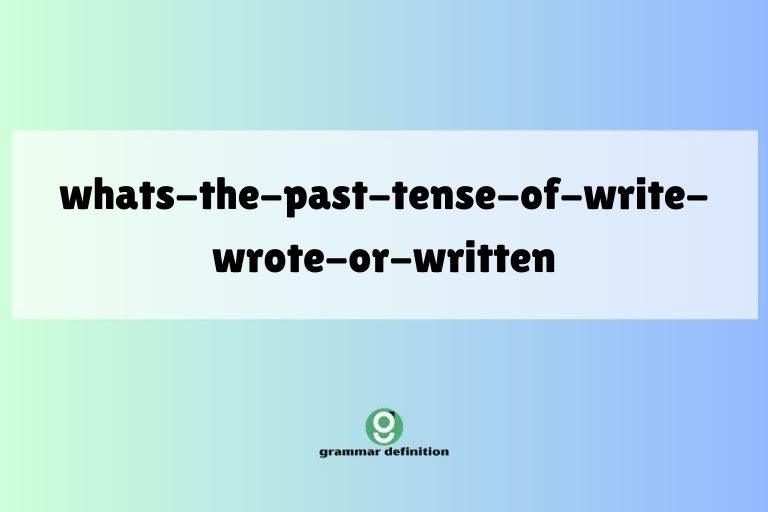Stung by Grammar: Mastering the Past Tense of “Sting”
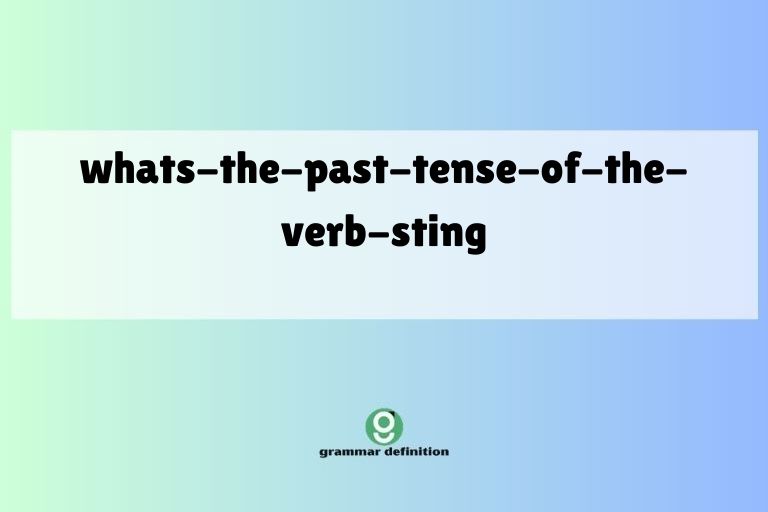
Understanding verb tenses is crucial for clear and effective communication in English. The verb “sting,” with its irregular past tense and past participle forms, can be tricky for English language learners.
This article provides a comprehensive guide to the past tense of “sting,” covering its definition, structural breakdown, various forms, usage rules, common mistakes, and advanced topics. By the end of this article, you will have a solid understanding of how to use “sting,” “stung,” and “stinging” correctly and confidently in various contexts.
This guide is designed for English language learners of all levels, from beginners to advanced speakers, as well as anyone seeking to improve their grammar skills.
Table of Contents
- Introduction
- Definition of “Sting”
- Structural Breakdown
- Forms of “Sting”
- Examples of “Sting” in Different Tenses
- Usage Rules for “Sting,” “Stung,” and “Stinging”
- Common Mistakes with “Sting”
- Practice Exercises
- Advanced Topics: Figurative Language
- Frequently Asked Questions
- Conclusion
Definition of “Sting”
The verb “sting” primarily means to pierce or wound with a sharp-pointed structure or organ, often injecting a poisonous or irritating substance. It can also be used figuratively to describe a sharp, smarting pain or a feeling of distress or annoyance.
“Sting” is an irregular verb, which means its past tense and past participle forms do not follow the standard “-ed” ending. Understanding its various forms and meanings is crucial for accurate usage.
Classification: Irregular Verb
Function: To describe the act of piercing or wounding with a sharp point, injecting a substance, or causing a sharp, emotional pain.
Contexts: “Sting” can be used in various contexts, including:
- Describing insect bites (e.g., “The bee stung me.”)
- Referring to the pain from a wound (e.g., “The cut stung when I put alcohol on it.”)
- Expressing emotional pain or hurt (e.g., “His words stung her deeply.”)
- In certain sports contexts (e.g., “The team was stung by the referee’s bad call.”)
Structural Breakdown
The verb “sting” has three main forms:
- Base Form: sting
- Past Tense: stung
- Past Participle: stung
The present participle or gerund form is “stinging.” Understanding how these forms are used in different tenses and sentence structures is essential for proper usage.
The basic structure for using “sting” in various tenses involves understanding the subject-verb agreement and the correct form of the verb. Here’s a breakdown:
Simple Present: Subject + sting(s) (e.g., I sting, he stings)
Simple Past: Subject + stung (e.g., I stung, he stung)
Simple Future: Subject + will + sting (e.g., I will sting, he will sting)
Present Continuous: Subject + is/am/are + stinging (e.g., I am stinging, he is stinging)
Past Continuous: Subject + was/were + stinging (e.g., I was stinging, he was stinging)
Present Perfect: Subject + has/have + stung (e.g., I have stung, he has stung)
Past Perfect: Subject + had + stung (e.g., I had stung, he had stung)
Future Perfect: Subject + will have + stung (e.g., I will have stung, he will have stung)
Forms of “Sting”
Base Form: Sting
The base form “sting” is used in the present tense, infinitive form, and with modal verbs.
Examples:
- Bees sting when they feel threatened.
- I can’t believe jellyfish sting.
- You should sting them back! (Just kidding).
Past Tense: Stung
The past tense “stung” is used to describe actions that happened in the past.
Examples:
- I was stung by a wasp yesterday.
- The criticism stung him deeply.
- She stung her finger on a thorn.
Past Participle: Stung
The past participle “stung” is used with auxiliary verbs like “have,” “has,” “had,” “is,” “was,” “were,” “been,” to form perfect tenses and passive voice constructions.
Examples:
- I have been stung by a bee before.
- He had been stung multiple times.
- The team was stung by the unexpected loss.
Present Participle/Gerund: Stinging
The present participle “stinging” is used to form continuous tenses and as a gerund (a verb acting as a noun).
Examples:
- The bee is stinging me!
- Stinging nettles can cause a rash.
- The act of stinging is a defense mechanism for bees.
Examples of “Sting” in Different Tenses
The following tables provide examples of “sting” used in various tenses to illustrate its correct usage in different contexts.
Simple Tenses
This table illustrates the use of “sting” in the simple present, simple past, and simple future tenses.
| Tense | Sentence |
|---|---|
| Simple Present | Bees sting when they are afraid. |
| Simple Present | He stings with his words. |
| Simple Present | I sting my conscience when I lie. |
| Simple Past | I was stung by a jellyfish last summer. |
| Simple Past | The insult stung him. |
| Simple Past | She stung her hand on the rose thorn. |
| Simple Future | The pain will sting for a while. |
| Simple Future | If you touch that plant, it will sting you. |
| Simple Future | I will sting them with my comebacks! |
| Simple Present | My eyes sting when I cut onions. |
| Simple Past | The sun stung my skin. |
| Simple Future | That joke will sting them for days. |
| Simple Present | Some snakes sting with their tails. |
| Simple Past | He felt stung by her rejection. |
| Simple Future | Criticism can sting if it is harsh. |
| Simple Present | The truth can often sting. |
| Simple Past | She was stung by his sudden departure. |
| Simple Future | The memory of that event will always sting. |
| Simple Present | My pride stings when I fail. |
| Simple Past | His betrayal stung me deeply. |
| Simple Future | The loss will sting for a long time. |
| Simple Present | Gossip stings when it’s about you. |
| Simple Past | Her harsh words stung me. |
| Simple Future | The truth will sting, but it’s necessary. |
| Simple Present | Disappointment can sting. |
| Simple Past | The cold wind stung my face. |
| Simple Future | The defeat will sting for a while. |
Continuous Tenses
This table demonstrates the use of “sting” in the present continuous and past continuous tenses.
| Tense | Sentence |
|---|---|
| Present Continuous | The bee is stinging my arm! |
| Present Continuous | My eyes are stinging from the smoke. |
| Present Continuous | The cold wind is stinging my cheeks. |
| Past Continuous | The nettle was stinging my leg as I walked through the field. |
| Past Continuous | Her words were stinging him as he walked away. |
| Past Continuous | My wound was stinging badly after the surgery. |
| Present Continuous | The memory of the accident is still stinging my heart. |
| Present Continuous | He is stinging his opponent with insults. |
| Present Continuous | The rejection is stinging her pride. |
| Past Continuous | The disappointment was stinging me. |
| Past Continuous | The sweat mixed with the salt was stinging my eyes. |
| Past Continuous | As the news spread, the scandal was stinging the company’s reputation. |
| Present Continuous | The criticism is stinging his ego. |
| Present Continuous | The injustice is stinging our community. |
| Present Continuous | The betrayal is stinging their friendship. |
| Past Continuous | The pain from the loss was stinging her for months. |
| Past Continuous | The humiliation was stinging him deeply. |
| Past Continuous | The truth, though necessary, was stinging their relationship. |
| Present Continuous | His harsh words are stinging her. |
| Present Continuous | The salt water is stinging my cut. |
| Present Continuous | The memory of that day is still stinging. |
| Past Continuous | The cold air was stinging my lungs. |
| Past Continuous | The loss of the game was stinging the team. |
| Past Continuous | The sharp words were stinging his pride. |
| Present Continuous | The insult is stinging her even now. |
| Present Continuous | The alcohol is stinging the wound. |
| Present Continuous | The failure is stinging his confidence. |
Perfect Tenses
This table showcases the use of “sting” in the present perfect, past perfect, and future perfect tenses.
| Tense | Sentence |
|---|---|
| Present Perfect | I have been stung by a bee before. |
| Present Perfect | The criticism has stung him deeply. |
| Present Perfect | She has never been stung by a jellyfish. |
| Past Perfect | By the time I reached the doctor, the pain had stung for hours. |
| Past Perfect | He had been stung by her rejection before he moved on. |
| Past Perfect | The team had been stung by several losses before they finally won. |
| Future Perfect | By next summer, I will have been stung by every insect imaginable! |
| Future Perfect | He will have been stung by the criticism for a long time before he recovers. |
| Future Perfect | By the end of the day, she will have been stung by the challenges she faces. |
| Present Perfect | The memory of that day has stung me ever since. |
| Present Perfect | He has stung his opponents with sharp wit. |
| Present Perfect | The company’s reputation has been stung by the scandal. |
| Past Perfect | She had been stung by his indifference before she decided to leave. |
| Past Perfect | The news of their betrayal had stung me deeply. |
| Past Perfect | By the time the truth came out, many people had been stung. |
| Future Perfect | By the time they apologize, the damage will have stung for years. |
| Future Perfect | By the time he recovers, the loss will have stung him deeply. |
| Future Perfect | By next year, the community will have been stung by the injustice for too long. |
| Present Perfect | The failure has stung his confidence. |
| Present Perfect | Her harsh words have stung him. |
| Present Perfect | The disappointment has stung her. |
| Past Perfect | He had been stung by her rejection before he met someone else. |
| Past Perfect | The memory of that day had stung her for years. |
| Past Perfect | By the time they apologized, the damage had stung for too long. |
| Future Perfect | By the time he moves on, the loss will have stung him deeply. |
| Future Perfect | By next year, the community will have been stung by the incident. |
| Future Perfect | By the time she understands, the betrayal will have stung their friendship. |
Usage Rules for “Sting,” “Stung,” and “Stinging”
Understanding the specific rules for using each form of “sting” is essential for accurate and effective communication.
- Use “sting” for the present tense and with modal verbs:
- Bees sting as a defense mechanism.
- You should never sting someone intentionally.
- Use “stung” for the past tense:
- I was stung by a wasp yesterday.
- The criticism stung him deeply.
- Use “stung” as the past participle with auxiliary verbs to form perfect tenses and passive voice:
- I have been stung by a bee before. (Present Perfect Passive)
- The team had been stung by the loss. (Past Perfect Passive)
- Use “stinging” to form continuous tenses and as a gerund:
- The bee is stinging me! (Present Continuous)
- Stinging nettles can cause a rash. (Gerund)
Common Mistakes with “Sting”
One of the most common mistakes is using the wrong form of the verb, particularly confusing the past tense and past participle.
| Incorrect | Correct | Explanation |
|---|---|---|
| I was stinged by a bee. | I was stung by a bee. | “Stung” is the correct past tense form. |
| He has stinged me before. | He has stung me before. | “Stung” is the correct past participle form. |
| The pain stang. | The pain stung. | “Stung” is the correct past tense form. |
Another common mistake is using “sting” in place of “stinging” in continuous tenses.
| Incorrect | Correct | Explanation |
|---|---|---|
| The bee is sting me! | The bee is stinging me! | “Stinging” is the correct present participle form. |
| The wind was sting my face. | The wind was stinging my face. | “Stinging” is the correct present participle form. |
Practice Exercises
Test your understanding of “sting” with the following exercises. Fill in the blanks with the correct form of the verb “sting.”
Exercise 1: Simple Tenses
Choose the correct form of “sting” (sting, stung) to complete the following sentences.
| Question | Answer |
|---|---|
| 1. Bees usually ______ when they feel threatened. | sting |
| 2. I ______ my finger on a thorn yesterday. | stung |
| 3. The criticism really ______ him. | stung |
| 4. The memory of that day still ______ me. | stings |
| 5. If you touch that plant, it will ______ you. | sting |
| 6. My eyes ______ when I cut onions. | sting |
| 7. The sun ______ my skin at the beach. | stung |
| 8. That joke will ______ them for days. | sting |
| 9. Some snakes ______ with their tails. | sting |
| 10. He felt ______ by her rejection. | stung |
Exercise 2: Continuous Tenses
Choose the correct form of “sting” (stinging) to complete the following sentences.
| Question | Answer |
|---|---|
| 1. The bee is ______ my leg! | stinging |
| 2. My eyes are ______ from the smoke. | stinging |
| 3. The cold wind is ______ my cheeks. | stinging |
| 4. The nettle was ______ my leg as I walked through the field. | stinging |
| 5. Her words were ______ him as he walked away. | stinging |
| 6. My wound was ______ badly after the surgery. | stinging |
| 7. The memory of the accident is still ______ my heart. | stinging |
| 8. He is ______ his opponent with insults. | stinging |
| 9. The rejection is ______ her pride. | stinging |
| 10. The disappointment was ______ me. | stinging |
Exercise 3: Perfect Tenses
Choose the correct form of “sting” (stung) to complete the following sentences.
| Question | Answer |
|---|---|
| 1. I have been ______ by a bee before. | stung |
| 2. The criticism has ______ him deeply. | stung |
| 3. She has never been ______ by a jellyfish. | stung |
| 4. By the time I reached the doctor, the pain had ______ for hours. | stung |
| 5. He had been ______ by her rejection before he moved on. | stung |
| 6. The team had been ______ by several losses before they finally won. | stung |
| 7. By next summer, I will have been ______ by every insect imaginable! | stung |
| 8. He will have been ______ by the criticism for a long time before he recovers. | stung |
| 9. By the end of the day, she will have been ______ by the challenges she faces. | stung |
| 10. The memory of that day has ______ me ever since. | stung |
Advanced Topics: Figurative Language
The verb “sting” is often used figuratively to describe emotional pain or sharp criticism. Understanding these nuances can help you use the word more effectively in writing and conversation.
Examples:
- “His words stung her deeply.” (Emotional pain)
- “The criticism stung him to the core.” (Sharp criticism)
- “The betrayal stung more than anything else.” (Profound disappointment)
In figurative language, “sting” conveys a sense of sudden, sharp pain or discomfort, often leaving a lasting impact. It’s a powerful word that can add depth and emotion to your writing.
Frequently Asked Questions
- Is “sting” a regular or irregular verb?
“Sting” is an irregular verb. Its past tense and past participle forms are “stung,” not “stinged.” Irregular verbs do not follow the standard -ed ending pattern of regular verbs.
- What is the past tense of “sting”?
The past tense of “sting” is “stung.” For example: “I was stung by a bee yesterday.”
- What is the past participle of “sting”?
The past participle of “sting” is also “stung.” It is used with auxiliary verbs like “have,” “has,” or “had” to form perfect tenses. For example: “I have been stung by a bee before.”
- How do I use “stinging” in a sentence?
“Stinging” is the present participle or gerund form. It’s used to form continuous tenses or as a noun (gerund). For example: “The bee is stinging me!” (present continuous) or “Stinging nettles can cause a rash.” (gerund)
- Can “sting” be used to describe emotional pain?
Yes, “sting” can be used figuratively to describe emotional pain or sharp criticism. For example: “His words stung her deeply.”
- What are some common mistakes people make with the verb “sting”?
Common mistakes include using “stinged” as the past tense or past participle, or confusing “sting” with “stinging” in continuous tenses. Always remember that the past tense and past participle are both “stung.”
- How can I remember the different forms of “sting”?
One helpful method is to create flashcards or use mnemonic devices. Practice writing sentences using each form in different tenses. Regular practice and exposure to the language will reinforce your understanding.
- Is there a difference in meaning between ‘sting’ and ‘prick’?
Yes, while both involve a sharp sensation, ‘sting’ often implies the injection of venom or irritant, whereas ‘prick’ simply means a small puncture. For example, a bee stings, while a needle pricks.
Conclusion
Mastering the past tense of “sting” involves understanding its irregular forms and how to use them correctly in different tenses and contexts. Remember that the past tense and past participle of “sting” are both “stung.” By studying the examples, practicing the exercises, and understanding the common mistakes, you can confidently use “sting,” “stung,” and “stinging” in your writing and speaking.
Continued practice and attention to detail will help you solidify your understanding and avoid common errors.
Understanding irregular verbs like “sting” is a crucial step in mastering English grammar. Take the time to review the rules and examples provided in this article, and don’t be afraid to practice using these forms in your own writing and speaking.
With dedication and effort, you can improve your grammar skills and communicate more effectively in English.

